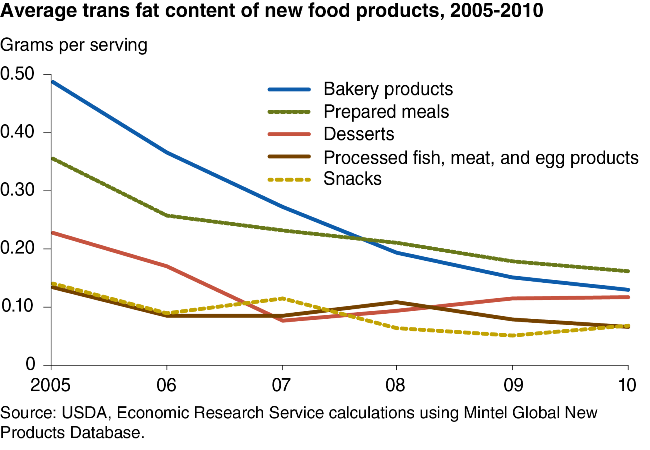Trans fat levels in new food products down from 2005 levels
- by Economic Research Service
- 10/17/2012

Negative health information about trans fats, combined with 2006 regulations requiring that food labels list the amount of trans fats in the food, have encouraged manufacturers to reformulate their products by reducing and, in many cases, eliminating trans fats. Trans fats are formed when vegetable oils are partially hydrogenated, raising their melting points and allowing them to be used in products such as snack foods and baked goods in place of more expensive animal-based fats, like butter. An ERS analysis of new products (including reformulated ones) introduced during 2005-10 found that trans fat levels for new bakery products declined by 73 percent--from an average of 0.49 grams per serving in 2005 to 0.13 grams in 2010. Trans fat levels for new snacks, desserts, prepared meals, and processed fish, meat, and egg products declined by around 50 percent over the period. This chart appears in "Trans Fats Are Less Common in New Food Products" in the September 2012 issue of ERS's Amber Waves magazine.

